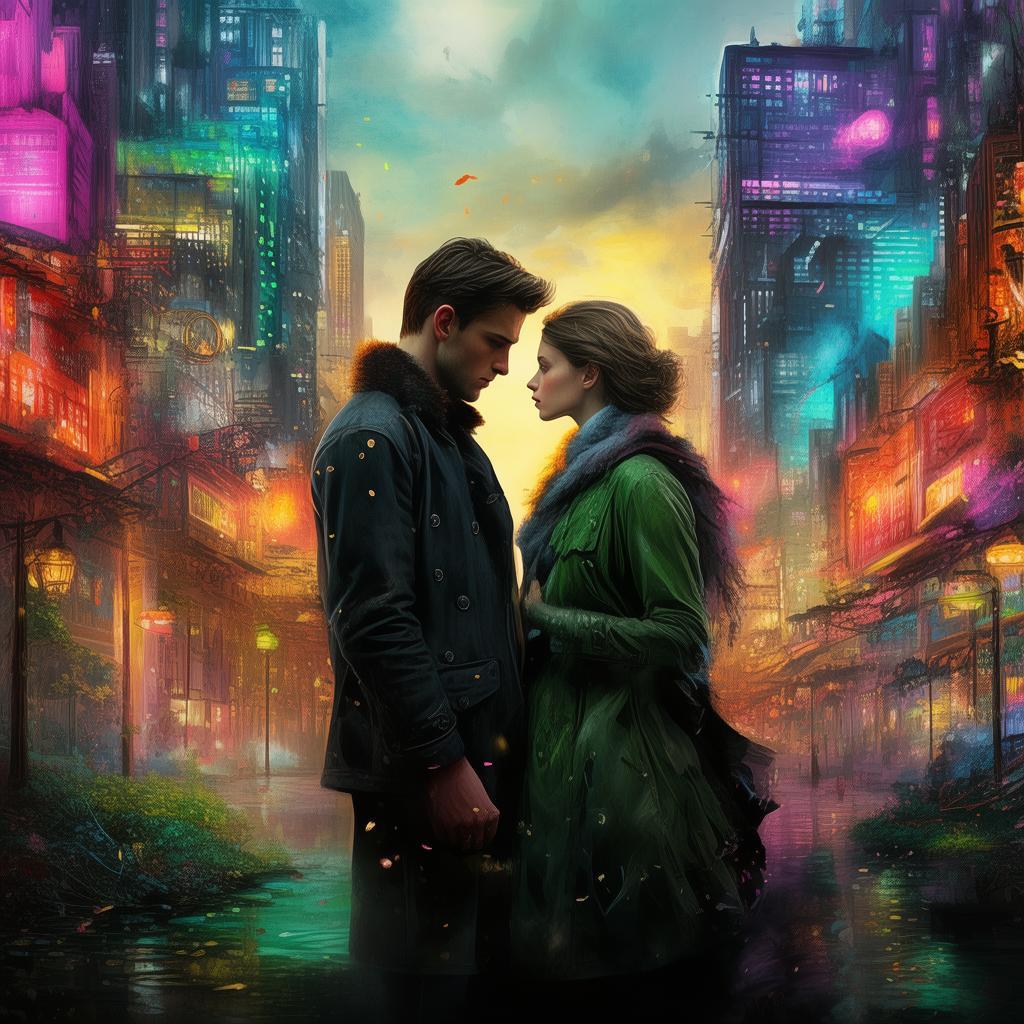The Tokyo Waltz: A Love Notation's Euphoria
In the heart of Tokyo, where neon lights dance with the rhythm of the city, a young woman named Emiko stumbles upon a peculiar notation etched on the wall of an old, forgotten bookstore. The notation, a series of cryptic symbols, seemed to beckon her, as if whispering secrets of a love story long forgotten.
Emiko had always been a lover of literature, but this notation was unlike anything she had ever seen. It was as if it were a code, a map to a love story hidden in plain sight. Intrigued and driven by an inexplicable pull, she began to decipher the notation, each symbol leading her deeper into the labyrinth of Tokyo's backstreets.
The notation led her to a quaint café where she met a man named Tatsuya, whose eyes held a story of their own. Tatsuya, a pianist with a soulful touch, was as enigmatic as the notation itself. As they shared stories over coffee, Emiko felt a connection that transcended time and space.
The notation spoke of a love that spanned lifetimes, a love that had never been fully realized. It spoke of a woman named Yumi, whose heart had been broken by a love she could not express, and a man named Kaito, whose love was so deep it ached like a physical wound. The notation seemed to be the bridge between these two souls, connecting them through the ages.
Emiko and Tatsuya's relationship grew, a delicate dance of shared glances and tender touches. They explored Tokyo's hidden corners, falling in love with the city as much as with each other. But as the notation's story unfolded, it revealed a heart-wrenching truth: Yumi and Kaito's love had been destroyed by a misunderstanding, one that had spanned generations.

Tatsuya revealed that he was Kaito's descendant, a man burdened by the weight of his ancestor's unrequited love. The notation had brought him to Emiko, who, in her own way, had become the embodiment of Yumi's heart. Emiko, too, had been carrying a secret: her own broken love, one that she had never shared with anyone.
As the story of Yumi and Kaito reached its climax, Emiko and Tatsuya were forced to confront their own fears and desires. They realized that the notation was not just a guide to another love story, but a mirror reflecting their own. The realization hit them hard, and in that moment, they knew that their love was no less profound than the love of Yumi and Kaito.
The notation's final symbol led them to a small, abandoned piano in the heart of Tokyo. It was there, with the notation as their guide, that Tatsuya began to play a haunting melody. The music, a blend of old and new, spoke of love, loss, and the enduring power of the human heart.
Emiko and Tatsuya danced to the music, their movements a reflection of their love. The notation had been more than a guide; it had been a teacher, a healer, and a reminder of the universal truth that love, in all its forms, is the most powerful force in the world.
As the music reached its crescendo, Emiko closed her eyes and felt a surge of emotion. She opened them to see Tatsuya, his eyes brimming with tears, his face alight with a love that had been reborn. In that moment, they knew that the notation's true purpose was to bring them together, to complete the unspoken love story that had spanned lifetimes.
The Tokyo Waltz: A Love Notation's Euphoria was more than a love story; it was a testament to the resilience of the human spirit, the power of love, and the enduring truth that in the end, all love finds its way.
✨ Original Statement ✨
All articles published on this website (including but not limited to text, images, videos, and other content) are original or authorized for reposting and are protected by relevant laws. Without the explicit written permission of this website, no individual or organization may copy, modify, repost, or use the content for commercial purposes.
If you need to quote or cooperate, please contact this site for authorization. We reserve the right to pursue legal responsibility for any unauthorized use.
Hereby declared.









